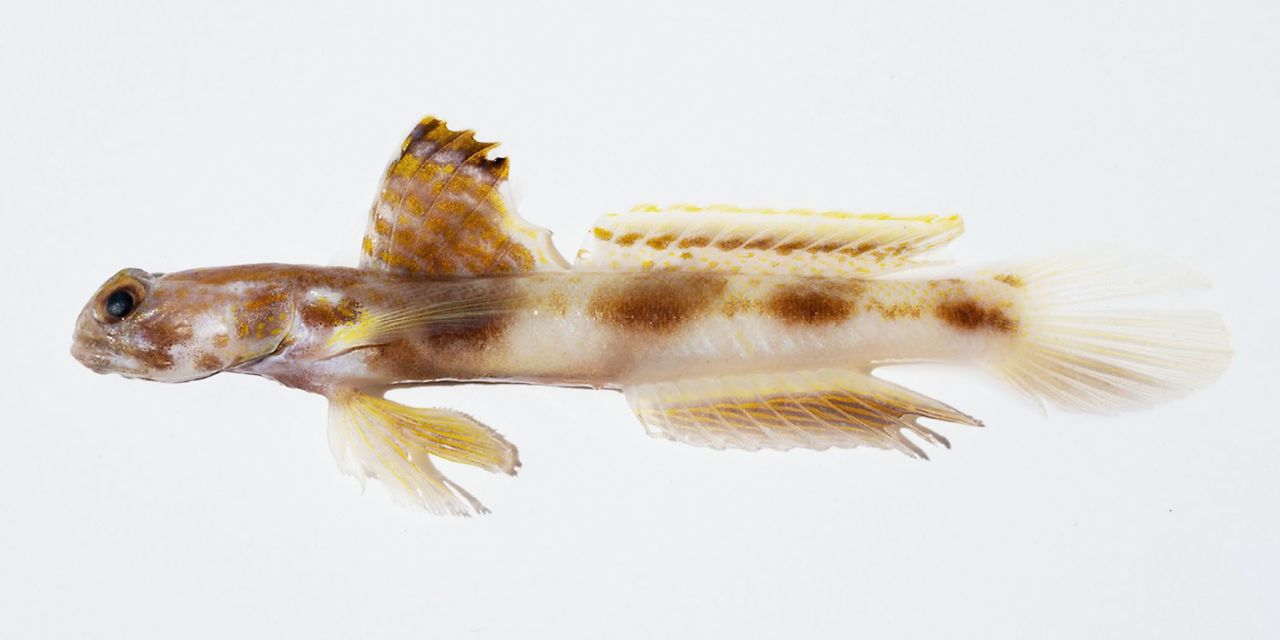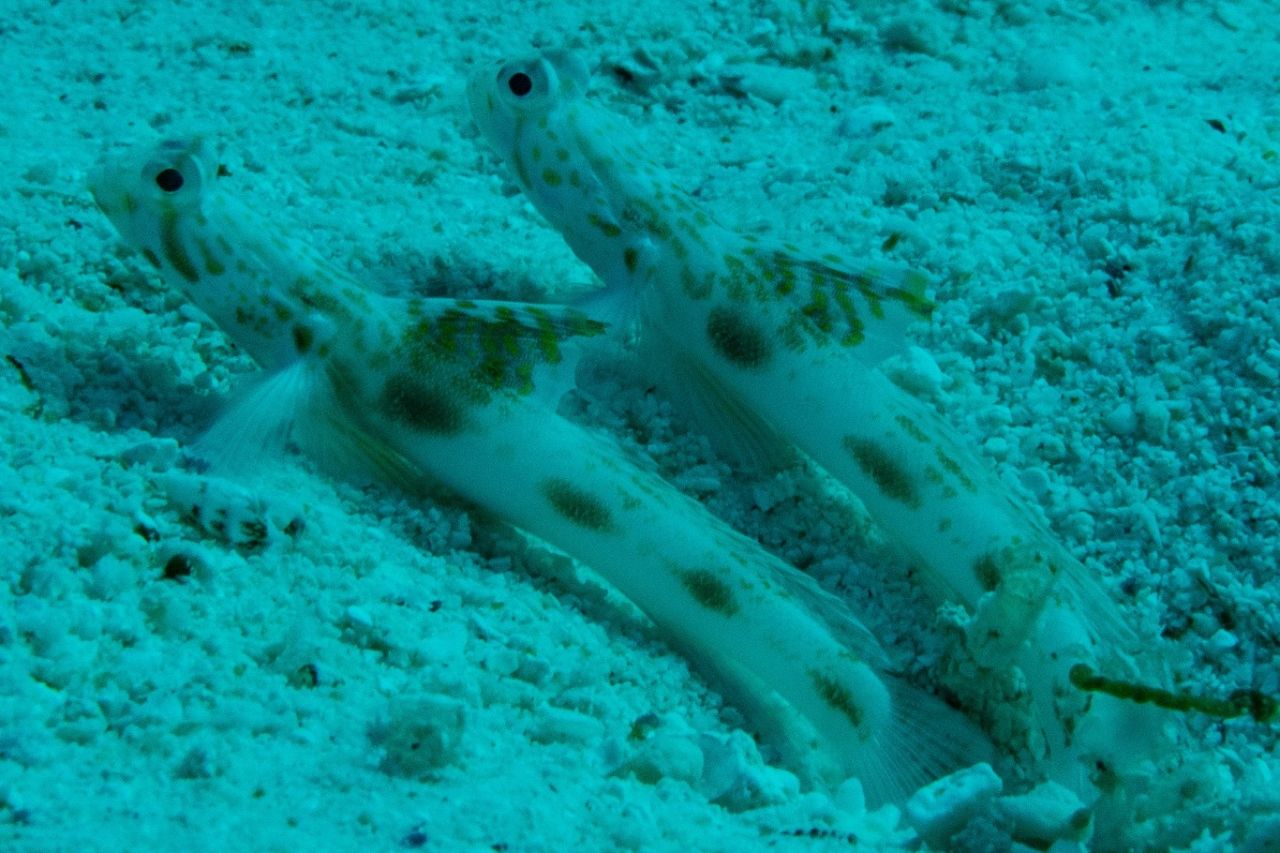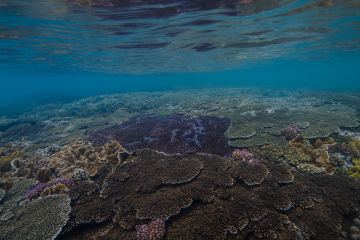Media Release ·
Researchers find new fish species in Great Barrier Reef
At a time when marine life is disappearing from the world’s oceans, the Foundation’s researchers are celebrating the discovery of a new species of coral reef fish in the southern waters of the Great Barrier Reef.

Named the Lady Elliot Shrimp Goby, the previously unknown fish was found as part of the Foundation’s Reef Islands Initiative research project led by the University of Sunshine Coast that is mapping the changing biodiversity on and around Lady Elliot Island, a tiny coral cay at the southern end of the Great Barrier Reef.
“This is a significant, exciting discovery,” says marine biologist and co-author Dr Chris Dudgeon, one of the researchers working on the collaborative Leaf to Reef research project, part of the Foundation’s Reef Islands Initiative that aims to protect critical habitats in the world's largest coral reef system.
The Lady Elliot Shrimp Goby is described in a paper released in the Journal of the Ocean Science Foundation. Small and white, with brown spots, yellow-orange bands and a large sail-like first dorsal fin, it was first sighted in a sand burrow that it shares with a pair of alpheid snapping shrimps.
“It's been a while since a ‘never recorded anywhere before’ fish has been described from the Great Barrier Reef,” Dr Dudgeon said.
“While the Great Barrier Reef is a much-studied ecosystem, the last completely new species to be described was a grouper found in the deep sea in 2019, which is where most new discoveries come from. To find a new fish species in the shallows on a reef, in plain sight is unique.”

The “Lady Elliot Shrimp Goby” (Tomiyamichthyes elliotensis) is the newest recorded species on the Great Barrier Reef. Credit: M. V. Erdmann.
The scientists believe the Lady Elliot Shrimp Goby is likely to be present throughout the Capricorn-Bunker reefs and potentially widespread throughout the whole Great Barrier Reef.
Great Barrier Reef Foundation Managing Director Anna Marsden says Lady Elliot Island is a critical habitat and refuge for over 1,200 species of marine life.
“We’re proud to have pioneered this important research through our Reef Islands Initiative which is establishing a network of climate change arks that will provide refuge for the Great Barrier Reef’s marine life.
“This exciting discovery of the Lady Elliot Shrimp Goby further highlights the importance of protecting the ecosystems that provide a safe home for our Reef’s amazing animals against the impacts of climate change.”
#More new fish to be uncovered
The researchers say the discovery generates more questions and speculation – including how many more new species are waiting to be uncovered.
Fish taxonomist and Vice President of Conservation International’s Asia-Pacific Marine Programs Mark Erdmann, who also co-authored the paper, said gobies were frequently overlooked by divers and marine scientists due to their small size and cryptic behaviours.
“Nonetheless, a close look at these fishes reveals a subtle beauty in their colour patterns which often rivals that of their more conspicuous cousins on the reef like butterflyfishes or parrotfishes,” he said.
“I’m delighted that the biodiversity research being conducted as part of the Leaf to Reef project is highlighting these ‘cryptobenthic’ species like the gobies, which besides comprising a significant proportion of the reef fish biodiversity on the Great Barrier Reef, are also vitally important as a significant source of food to larger reef fishes including wrasses, groupers and emperors.”
#Safeguarding the Reef
UniSC Marine Biologist Associate Professor Kathy Townsend says the new discovery highlights the importance of the Leaf to Reef project that she leads.
“New species research is critical to identify ecosystems most in need of protection, so too is mapping how the island’s biodiversity is changing due to species drift, allowing us to measure the impact of climate change and act to safeguard against it,” she said.
Since 2020, a team of scientists has been compiling a comprehensive baseline of all vertebrate species – birds, turtles, sharks, fish, reptiles and mammals – living on or around Lady Elliot Island. Studies include tagging sea turtles and tracking manta rays, along with bird counts that have uncovered the world’s oldest recorded red-tailed tropic bird and identified 14 new migrant species that can now be found on the island.
“We have fish and birds appearing in places they haven’t been found before which emphasises the important role that Lady Elliot Island plays as a wildlife refuge and a shelter for northern tropical species moving south to escape warming oceans,” said Dr Townsend.
“Another key part of our research is understanding connections within and between coral reef habitats and the species that live there – from microscopic algae all the way up the food chain to sharks and manta rays – and how human actions may be impacting these.”
#The protector
There are currently over 100 recognised species of shrimp gobies in the Indo-West Pacific, who often live in the same burrow as shrimps, with the goby acting as lookout to warn the shrimp of predators. In return, the shrimp builds and maintains the burrow.
Lady Elliot Island was the first location included in theReef Islands Initiative, a ten-year project to establish a network of climate change refuges to protect critical habitats on key Reef islands. The program is led by the Great Barrier Reef Foundation and supported by funding from Lendlease, the Australian Government, the Queensland Government and the Fitzgerald Family Foundation.





